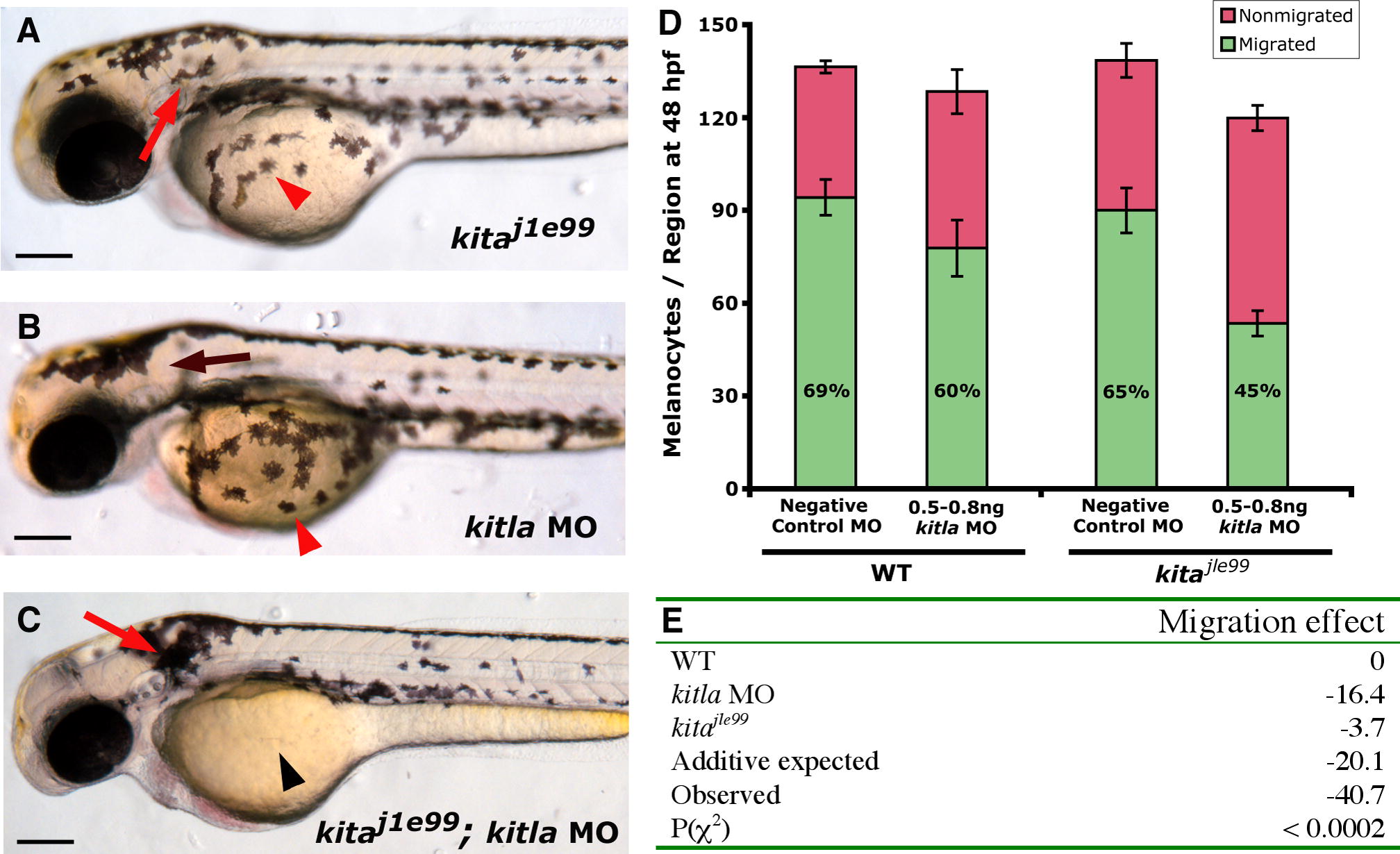Fig. 6 kitla MO Enhances Temperature-Sensitive kitj1e99 Allele (A) kitj1e99 embryos reared at 28 °C appear similar to wild-type melanocyte pattern (see Figure 4A for wild-type) at 3 dpf. (B) A submaximal dose (0.5 to 0.8 ng) of kitla MOs shows little effect in wild-type embryos. (C) Submaximal dose of kitla MOs shows a significant migration phenotype in kitj1e99. (D and E) Quantitative analysis of kitj1e99–kitla enhancement. Melanocytes were counted at 3 dpf and scored as migrated if in green regions or nonmigrated if in regions shown in red (Figure 4H). Mean values with 95% confidence interval are reported (n = 10). (D) Using this metric, wild-type embryos average 94.4 (69% of total) migrating melanocytes. A submaximal dose of kitla MOs results in 16.4 fewer migrated melanocytes than wild-type. kitj1e99 embryos reared at 28 °C have 3.7 fewer migrated melanocytes. Neither the number of total melanocytes or of migrating melanocytes in kitj1e99 nor the submaximal dose of kitla MOs is significantly different compared with wild-type. (E) Migration effect is defined as the difference in migrating melaocytes compared to wild-type. If the combined effects of kitj1e99 and the submaximal dose of kitla MOs are additive, we expect a migration effect of -20.1 in the kitj1e99–kitla MO larvae (-16.4 ± 3.7). Instead, we observe a migration effect of -40.7. The χ2 test between the number of migrated melanocytes in the kitj1e99–kitla MO larvae and the expected number reveals this difference to be significantly (p < 0.0002) greater than additive. Scale bars: 150 μm.
Image
Figure Caption
Figure Data
Acknowledgments
This image is the copyrighted work of the attributed author or publisher, and
ZFIN has permission only to display this image to its users.
Additional permissions should be obtained from the applicable author or publisher of the image.
Full text @ PLoS Genet.

